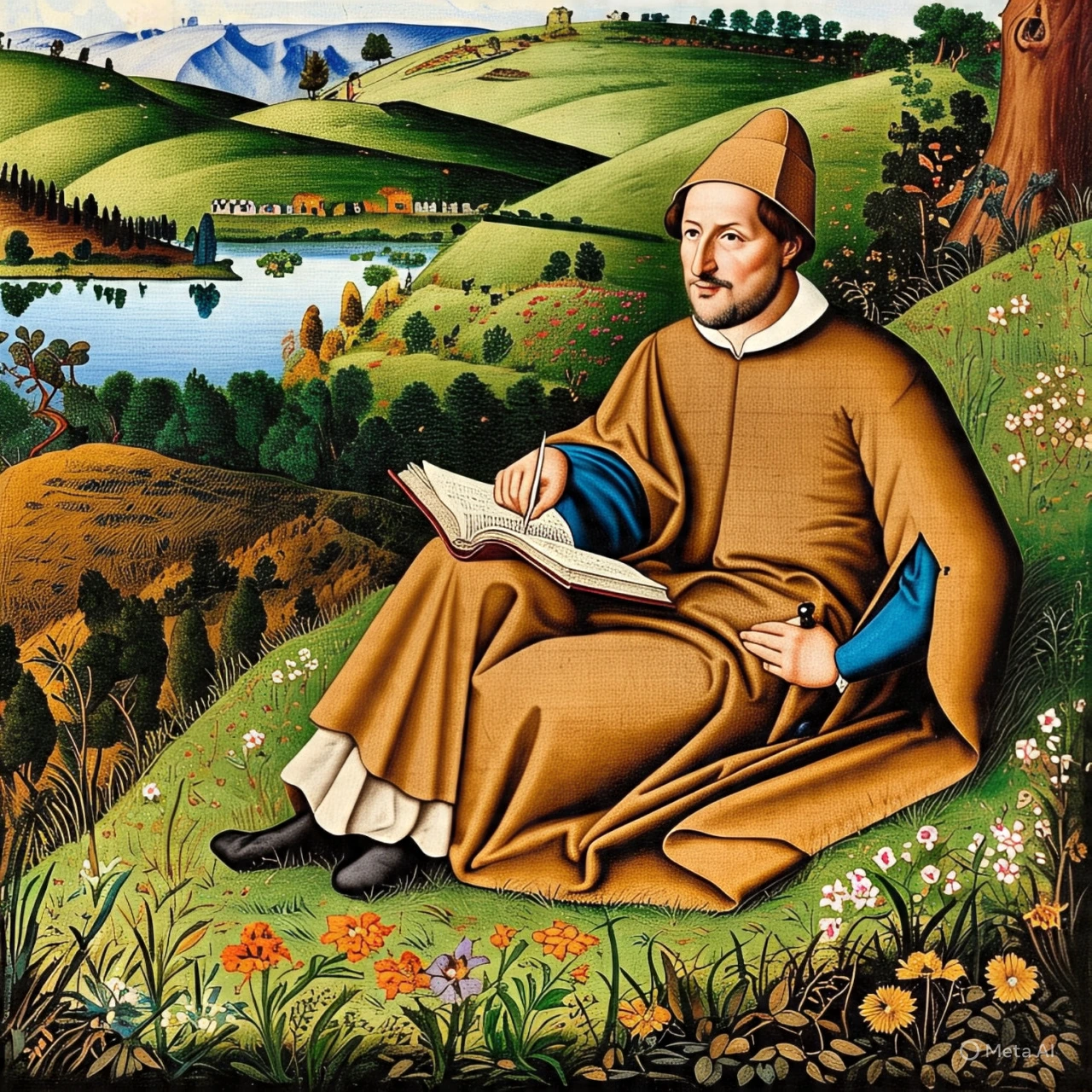
Get in Touch
We will get back to you within 24 hours.
Welcome to MVS Blog

"Me thynketh it acordaunt to resoun
To telle yow al the condicioun
Of ech of hem, so as it semed me, .
And whiche they weren, and of what degree,
And eek in what array that they were inne;"
Answer - Introduction
In the General Prologue of The Canterbury Tales, Chaucer talks about 29 people going on a religious journey to the shrine of Saint Thomas Becket at Canterbury. This was a common trip in medieval England. Chaucer uses this journey to bring together people from different backgrounds, jobs, and social classes. He plans to describe each person’s looks, personality, and way of life. His descriptions are clear, funny, and full of meaning. Through these characters, Chaucer shows what life was like in 14th-century England in a simple and realistic way
“About The Author”

Geoffrey Chaucer (1343–1400) is called the ‘Father of English literature’ and is one of the earliest great poets to write in English. He is best known for his famous work The Canterbury Tales. Chaucer wrote in Middle English, mixing in Latin and French words. His poetry gives great joy and a lively picture of 14th-century English life.
“Description of Given Stanza”
"Me thynketh it acordaunt to resoun / To telle yow al the condicioun / Of ech of hem, so as it semed me, / And whiche they weren, and of what degree, / And eek in what array that they were inne;" —
Explanation: "Me thynketh it acordaunt to resoun" Chaucer (pilgrim) says, "It seems reasonable to me." He feels it is logical and fitting to describe the pilgrims.
These lines shows Chaucer’s clear intention to describe each pilgrim honestly and in detail. He wants to tell us who they are, what their background is, which social class they belong to, and how they appear outwardly. This shows his plan to paint complete and realistic pictures of the people around him. The narrator says it makes sense ("accordaunt to resoun") to describe each pilgrim’s "condicioun," or character.
“To telle yow al the condicioun” This means, "To tell you the condition or nature of each person." Here, "condicioun" refers to each pilgrim’s character, background, personality, and possibly moral nature. For example, the Knight is shown as brave and modest, while the Wife of Bath is bold and experienced in love and marriage. Each portrait feels personal and full of life.
• "Of ech of hem, so as it semed me," This means, "Of each of them, just as it appeared to me." Chaucer explains that he is describing the pilgrims as they appeared to him. These are his own observations, not facts or exact truth.
• "And whiche they weren, and of what degree," This means, "And who they were, and what social rank or class they belonged to." Chaucer promises to tell the readers not just the names or types of people, but also their social status, which was very important in medieval society.
• "And eek in what array that they were inne;" This means, "And also what kind of clothes or appearance they had." “Array” refers to their dress, manner, and presentation-what they wore and how they looked, which often reflects their profession, wealth, or pretensions.
“Critical Commentary on Chaucer’s Literary Portraits”
1. Chaucer’s Use of Realism and Social Diversity
Chaucer’s The Canterbury Tales gives us a clear and lively picture of 14th-century English society. Instead of only showing perfect or ideal people, Chaucer shows his characters as real and believable, with strengths and weaknesses. He includes people from all parts of society like nobles (the Knight), church members (the Parson and the Monk), the middle class (the Merchant and the Franklin), and working-class people (the Miller and the Ploughman).
2. Use of Irony and Satirical Tone
3. Use of Descriptive Detail and Symbolism
Chaucer makes his characters more interesting by using clear descriptions and symbols that show deeper meanings. The clothes, looks, and things the pilgrims carry often tell us about their morals or social position. For example, the Monk wears fancy clothes with fur and a gold pin shaped like a love knot. This is very different from how a poor, serious monk should look, showing that he cares more about the world than religion. The Wife of Bath wears bright red stockings and a big hat, showing that she is bold and independent, especially about love and marriage. The Summoner has a red, pimplyface and ugly eyebrows, which show his sinful and corrupt nature. He looks like a walking warning about bad behavior. These details are not just to make the characters easy to picture—they also tell us about their behavior and role in society. Chaucer uses these images to help us understand the characters better, beyond how they look.
Conclusion
Chaucer’s portraits of the pilgrims are detailed, honest, and full of life. Through simple words, humor, and hidden criticism, he shows both individuals and society. His characters represent different classes and human behaviors, making them feel real. Chaucer’s style of writing made a big impact and still helps us understand life in 14th-century England.
0 Response